-
Posts
12420 -
Joined
-
Last visited
-
Days Won
551
Content Type
Profiles
Forums
Events
Everything posted by Fiery
-
Maybe you're comparing the wrong readings against each other? There are multiple thermal readings for the CPU, so it's not always easy to match them with another software's own readings...
- 59 replies
-
- asus
- temp issues
- (and 5 more)
-
It's not possible to do that, since in virtualized environments many of the CPU registers that would be necessary to measure CPU core clock speed and BCLK (bus speed / base clock) are inaccessible or provide incorrect values.
-

SMART for HDDs: Power-On Time Count shows N/A (HGST HDS724040ALE640)
Fiery replied to 101's topic in Bug reports
HDDs have different measurement units for the SMART attribute 09, so it's not possible to implement a generic solution that would cover all HDDs out there. Do you think your HDD measures power-on time in hours? In other words, do you think 15986 hours which is 666 days would be correct for your HDD? If you can let us know what the measurement unit for your particular HDD is, we can add that model to the SMART module of AIDA64 in order to show you the remaining drive lifetime information. If you have multiple HDDs, and you can send measurement unit information for all of them, that would be even more cool In such case don't forget to specify the full model ID of your HDD, like for this case Hitachi HDT721010SLA360. Thanks, Fiery -
We generally recommend either going for a cheap 2nd hand TFT monitor (that you can connect via DSub or DVI or HDMI), and then you can use the SensorPanel module as well as put any other window on it -- since it would just be a secondary monitor in Windows... Or if you're ready to spend more $$ on the project: go for a USB connected monitor like Asus MB169B+ : https://www.asus.com/hu/Monitors/MB169BPlus/ Or pick up an Android tablet that you can use along with the AIDA64 RemoteSensor module on WiFi, or with the Odospace LCD module using USB connection. Any other LCD solutions are either not 100% stable (like Samsung SPF Digital Frames) or very expensive to purchase.
-
Issue #5 (missing PSU readings): As you can see, HWiNFO64 cannot measure +3.3V current or +3.3V power either, since it's not provided by your PSU for some reason. The total PSU power comes from a different PSU register, but we've never found that reading dependable or accurate enough to use it, especially the power in and efficiency values which are just estimates and can wildly differ from the actual values. Issue #6 (CPU temperature): My understanding is that the CPU temperature reading follows CPU load closely, so I cannot see an issue there. It would be odd and hard to explain if CPU temperature risen while CPU load drops, but I don't think that's the case.
-
It's rather difficult for us to track your individual issues because it's flooding a single topic and causing single posts to become very long. After resolving these issues please post new issues into separate, new topics. That way we'll be able to sort them out much easier, and focus on them individually. Issue #1 (Asetek LC): There may be a firmware version difference/discrepancy between your seemingly similar H115i devices. Please create an USB Dump on both systems, so we can compare the two Asetek based devices you've got. Right-click on the bottom status bar of AIDA64 main window --> System Debug --> USB Dump. Copy-paste the full results into this topic, or attach the results as a TXT file to your post. You may need to enable status bar in AIDA64 / main menu / View first. Issue #2 (RAM slot labels): Please note that DMI information has nothing to do with enumerating SPD memory modules directly. DMI information is collected by the BIOS at bootup, so its accuracy depends on the accuracy of the BIOS. And since it rides on the BIOS, DMI information can be adjusted down to be specific to each motherboard model and CPU type. It is much easier to assure its accuracy than when you've got a generic method. Issue #3 (first 2 RAM slot labels on OSD Panel): Maybe it's because you've previously edited the OSD item labels and AIDA64 remembers that label that you've previously specified. You can reset those OSD items if you close AIDA64, go to AIDA64 installation folder, open AIDA64.INI for editing (using e.g. Notepad), find the lines starting with OSDItem_TDIMMTS and remove those lines from the AIDA64.INI file. Issue #4 (unstable SPD modules enumeration): On Haswell-E and Broadwell-E processors SPD enumeration is quite unstable, caused mainly by the SPD bank switching mechanism that is unique to DDR4 memory modules. We've improved on that a number of times already, but it seems it's still not 100% stable. I'm afraid we've run out of ideas on what way could we make it more stable Issue #5 (missing PSU readings): +3.3V current reading fails on your AX1500i PSU. I'm not sure why that is, but in the dump it's clearly failing. That causes the missing +3.3V power reading as well (since +3.3V power is calculated by multiplying +3.3V voltage and +3.3V current readings). That also causes the missing PSU power reading, since PSU power is calculated by adding up +3.3V power, +5V power and +12V power. Corsair RMi PSUs do not monitor -12V voltage rail. Issue #6 (background polling of sensor readings): It's most likely caused by another AIDA64 hardware monitoring module that keeps running in the background even with the OSD Panel disabled/hidden. On PC1 make sure to check if you have other modules enabled, like Desktop Gadget, LCD, External Applications or Logging. Support and maintenance is included in all AIDA64 licenses. If you mean that you need a fresh beta build of AIDA64 Business, please send me a private message about it. Issue #6 (CPU temperature): We're pretty sure we're using the right sensor chip rail to measure CPU temperature on your motherboard. If it's not in line with other software's measurements, it's not really the fault of our software
-
Which sensor do you mean exactly? NICn Download Rate, NICn Upload Rate, NICn Total Download, NICn Total Upload, or NICn Connection Speed?
-
Please note that it's not possible to diagnose such issues remotely. You may want to take your phone to a local specialist and have it checked out.
-
We've added support for the built-in 160x32 pixel monochrome LCD screen of EVGA Z10 gaming keyboard. You can enable the LCD device from AIDA64 / main menu / File / Preferences / Hardware Monitoring / LCD / EVGA. [/ Currently AIDA64 communicates with the LCD directly, using USB HID interface. It collides with EVGA's own software (EVGA Unleash), so it's recommended to close that software before enabling EVGA Z10 support in AIDA64. EVGA will soon develop a proper SDK/API for their keyboard, much like the LCD API of Logitech gaming keyboards, so that multiple software can put information on the LCD the same time, without collisions. You can find the new AIDA64 beta update at: https://www.aida64.com/downloads/latesta64xebeta Please let us know if you find any difficulties enabling or using this new feature. Also let us know if you've got another kind of LCD device that is currently unsupported by AIDA64. Regards, Fiery
-
My statement from 2016 is still valid today.
-
Not yet. iCUE is also affected by the same issue: Corsair decided not to use the previous synchronization mutexes in that software of theirs either. We're now pulling several strings at Corsair in an effort to try and convince them to put the mutexes back again.
-
The regular gauges are not available in the RemoteSensor module due to performance considerations as well as scaling issues.
-
Thank you. It seems the video driver (ForceWare) fails to report the video memory status via the standard driver API (NVAPI) on your system. We've checked, and the same ForceWare revision does report the video memory status properly on other video cards. It could be a ForceWare bug or a certain pecularity or system property that prevents NVAPI from reporting that information to 3rd party applications. As for the GPU fan, I suppose your notebook has no GPU fan installed. The system may have one or two fans, and one of them may blow the hot air from the GPU, but those fans are not managed by the GPU, but instead the Embedded Controller logic of your notebook motherboard.
-
They're working on it, but progress is slow due to many occuring issues. They wouldn't want to release something half-baked. So once the non-beta BIOSes supporting the new ACPI-WMI interface is out, they will be great
- 59 replies
-
- asus
- temp issues
- (and 5 more)
-
You can specify the diameter, thickness and colour for arc gauges.
-
The LCD module doesn't support pre-drawn gauges, but only the on-the-fly generated arc gauge. That's basically the only difference between the otherwise similar SensorPanel module and the External LCD module.
-
EDIT: We've added the requested information.


